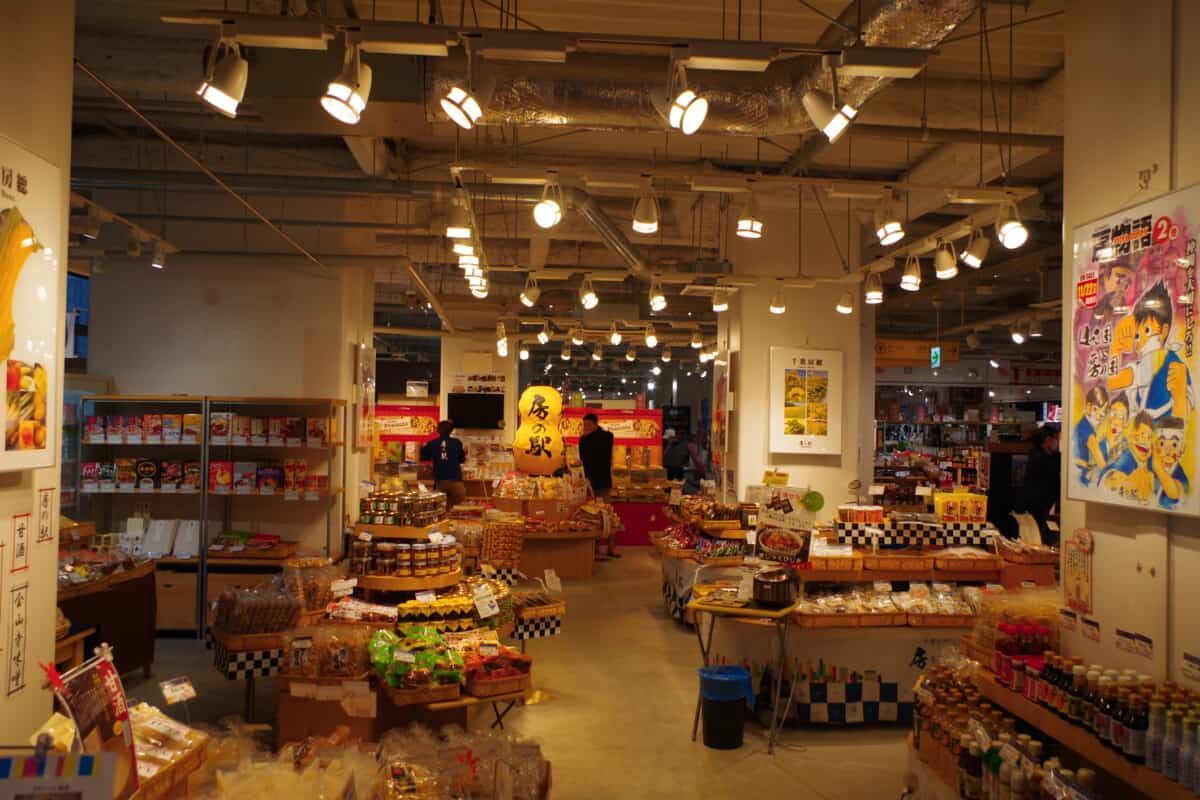Japan’s grocery stores are mostly the same as those found in the west. However, Japanese consumers purchase vastly different items that will rarely be found in a standard grocer in the west.
Organized and laid out the same as their western counterparts, usual items are often found in the fresh meats, vegetables, and pre-cooked deli items area.
Product packaging can also be very unique as many designs add cute characters and humorous packaging logos and unusual images of famous persons or even the companies founders directly on the packaging.
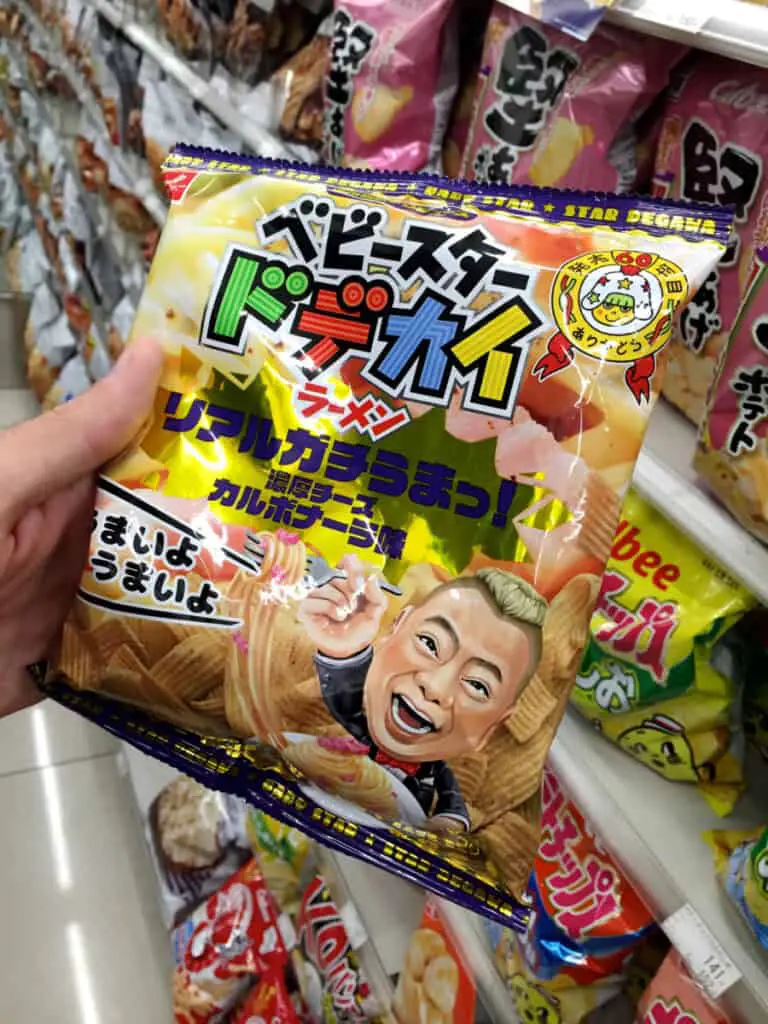
Limited-time flavors are a very large part of food product sales in Japan. For instance, the American candy industry might have a candy-flavored product of a few flavors. These products will often have the title of “Limited edition” printed on the packaging.
The Japanese market might introduce dozens of flavors throughout the year with unique and even strange flavors not available outside of Japan, even though the company itself may be an international food manufacturer and distributor.
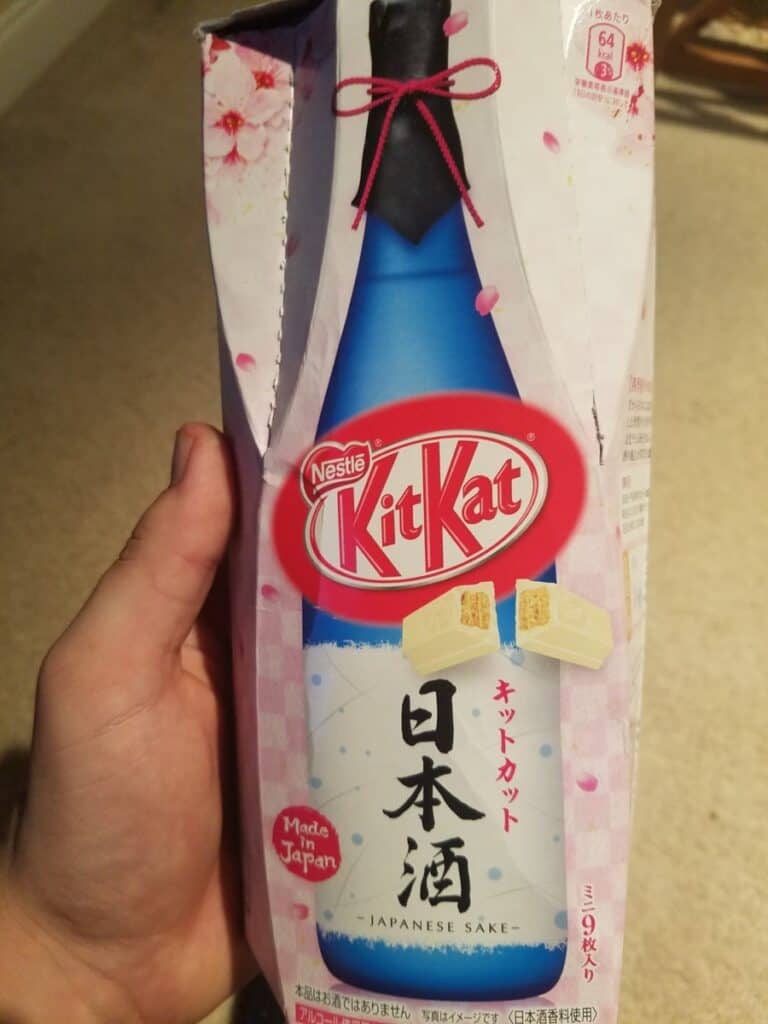
When traveling to a new country many people say that you can quickly get a feel for the culture by going into a local supermarket.
Although this may seem like quite a mundane task and perhaps on some level it is true. Here not only will you be surrounded by a lot of local people but you can also get an idea of how much things cost, the types of food available and how people interact with each other.
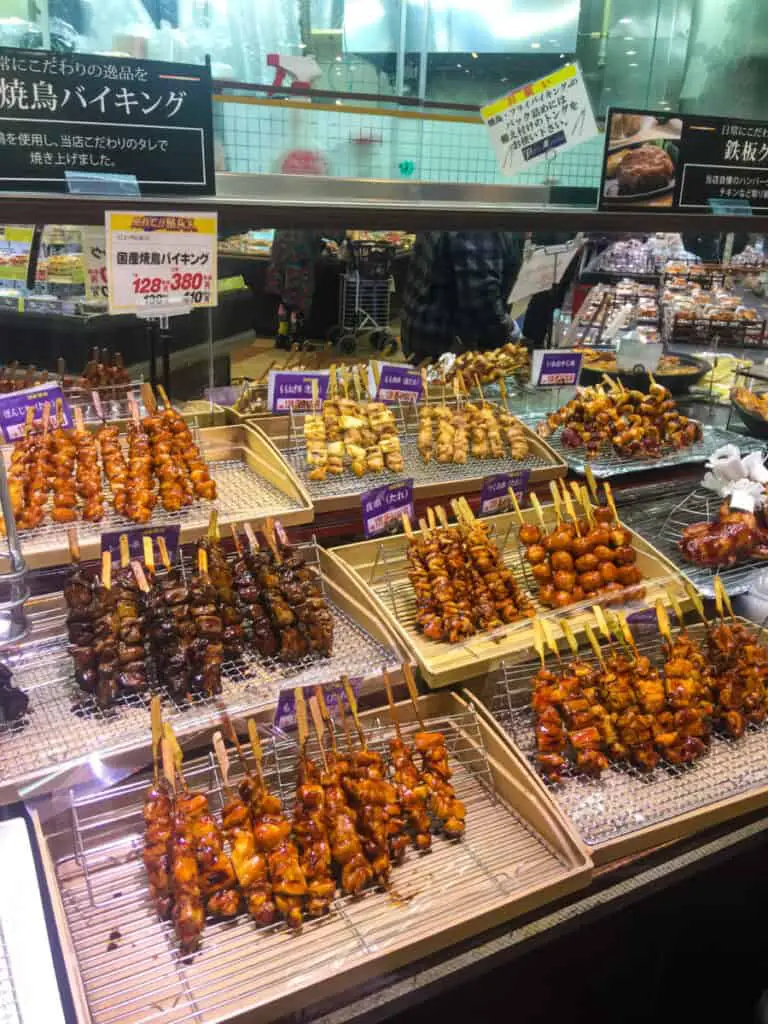
If you are going on a trip or extended stay to Japan and you do not speak Japanese then knowing how Japanese supermarkets differ in advance can be a great time saver and can help you to quickly locate items that you need as well as not worry about making any etiquette mistakes.
Unique item sold in Japanese grocery stores
| Yakitori | Chicken on a stick | 100-200 Yen each |
| Sashimi | Sliced thin fish (raw) | 500-1000 Yen (varies by packaging) |
| Sushi | Fish rice and vegetables (rolled) | 300-1000 Yen (varies by packaging and type) |
| Tofu | Soybean curd | 100 Yen (standard small packaging) |
| Natto | Fermented soybeans | 100-200 Yen (3 piece packaging) |
| Tempura | Fried vegetables or seafood | 200-300 Yen (3-4 pieces) |
| Miso paste | The base of miso soup | 300-400 (sold in small containers) |
| Onigiri | Rice wrapped in seaweed | 150 Yen (per piece) |
| Gyoza | Stuffed dumpling with meat or vegetables | 300 Yen (5-6 pieces) |
| Wafu | Japanese salad dressing | 300 Yen (bottle) |
Some items sold in Tokyo that are harder to purchase such as items from the Japanese countryside can reach incredible amounts because of the rarity of the item and the demand from a large population group in the city.
Fruit is frequently given as a gift in Japan, and melons are among the most costly. The Yubari King melons are the most notable, with two of them setting a record price of $45,000 at an auction in 2019. Crown melons produced in Shizuoka prefecture commonly cost up to $200 per melon.
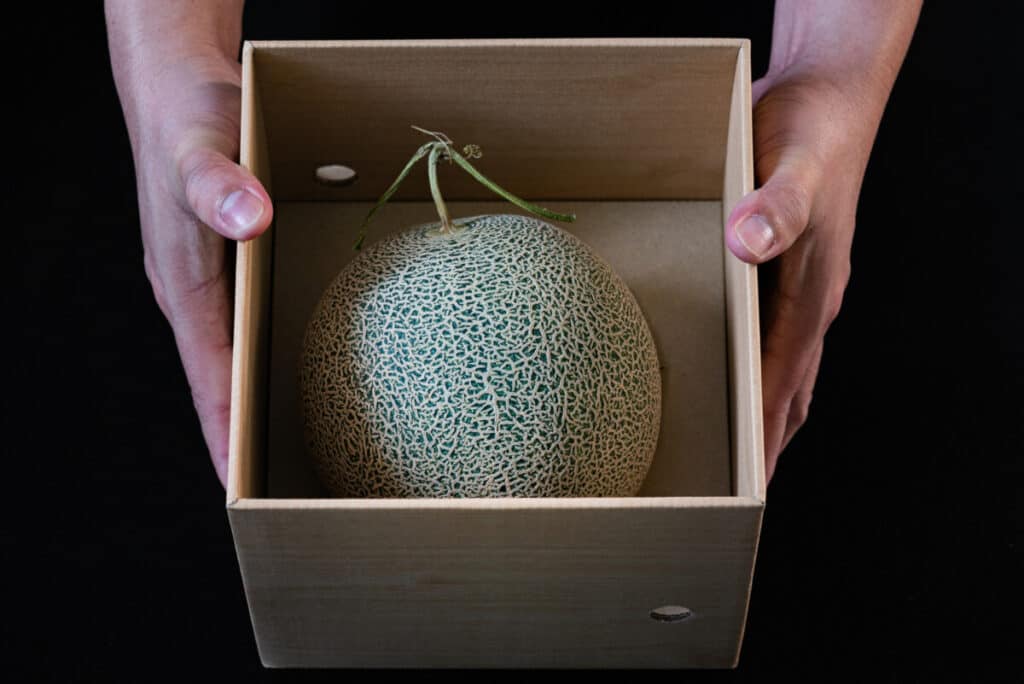
This is an exception rather than the rule as most vegetables found at small and large markets across Japan’s major cities are priced at normal levels found across the world. However, many items can be higher than normal because of demand such as strawberries and the aforementioned melons.
How the shelves are stocked
When it comes to the appearance of a Japanese supermarket you will notice that they are very similar to grocery stores in the West. The shelves are almost always filled stocked and the areas are neat and well organized.
However, one main difference between the two is that products that are soon due to expire will not be left on the shelf in Japan.
Typically in Western supermarkets, these soon-to-be out-of-date items are placed toward the front of the shelf in the hope that they will be sold first.
Instead, in Japan, these products will be removed and placed in a special location within the grocery store and are usually discounted. So, if you are on the hunt for a bargain then this is usually the first place to go.
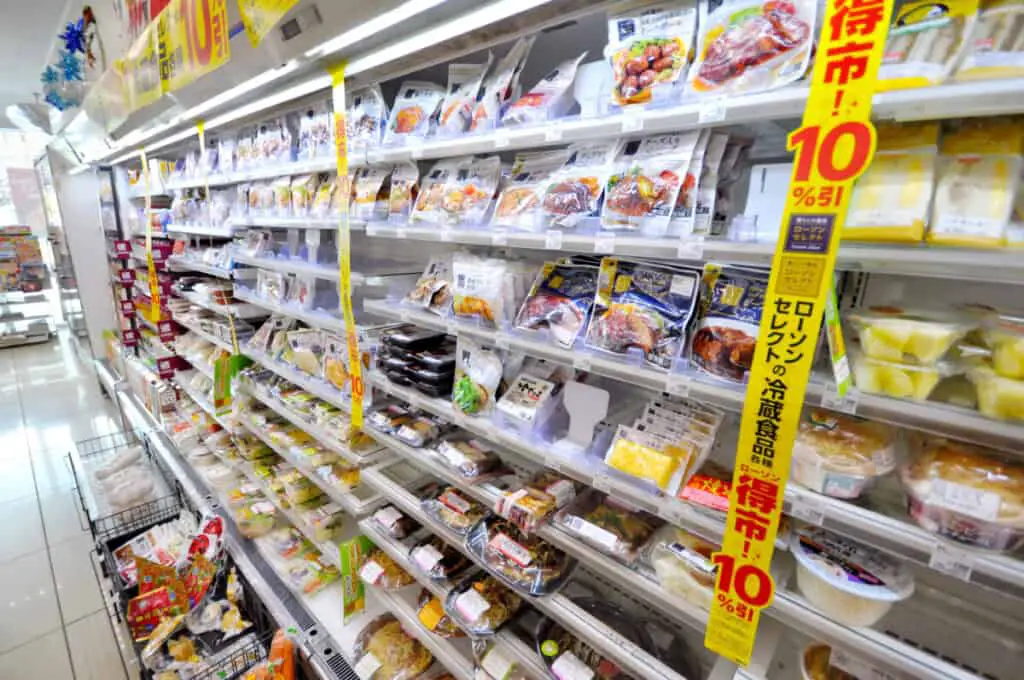
In addition to the full-size supermarkets are the Konbini or convenience stores that can stock an impressive amount of fresh food and packaged food items. Few people in the west think of a convenience store as a place to get fresh foods or groceries.
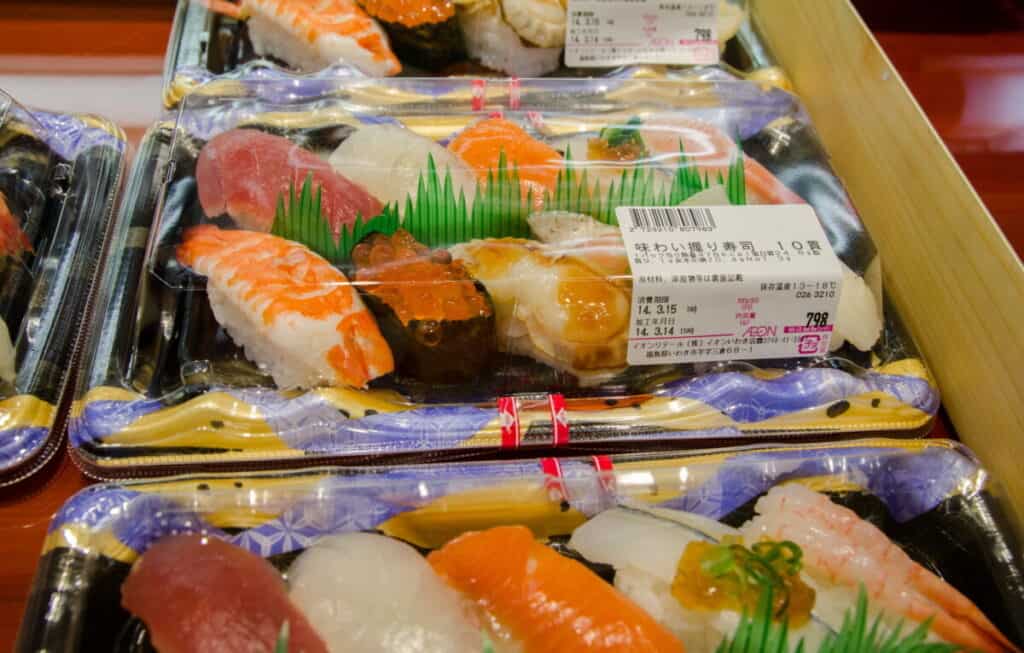
Another difference that you will notice in Japanese grocery stores is that they will have a different variety of foods available.
So, do not expect to see your typical Western-style food in abundance. Instead, you should expect to see entire corners of the supermarket dedicated to tofu, sushi, sashimi, and soybean products as these are very popular in Japan.
Japans biggest and most well-known grocery chains:
| Ito-Yokado | 175 Stores | Various cities across mainland Japan |
| AEON | 4000 Stores | Nationwide |
| Daiei | 3000 Stores | Varies cities across Japan |
| Kansai super | 65 Stores | Tokyo-Osaka-Kobe-Hyogo-Nara |
Japan’s major cities are dominated by small family-owned stores that are found in every neighborhood across its major cities such as Tokyo, Osaka, and Nagoya. However, these family-owned stores are not limited to large cities but operate in the smallest of towns as well.
The reason small stores are so abundant in cities as Tokyo is that retail space is extremely expensive per square foot and because of the relaxed zoning laws a family can easily open a small shop on the first level of a residential home. See the below link to how zones in cities are regulated.
Supermarket takeout
Some supermarkets will have a to-go section that consists of a variety of prepackaged food that can either be eaten on the go or can be heated up to be eaten at home with some rice and other accompaniments. Usually, here you can find Japanese dishes such as bento boxes, sushi, bread, fish, stews, cooked meats, and even salads.
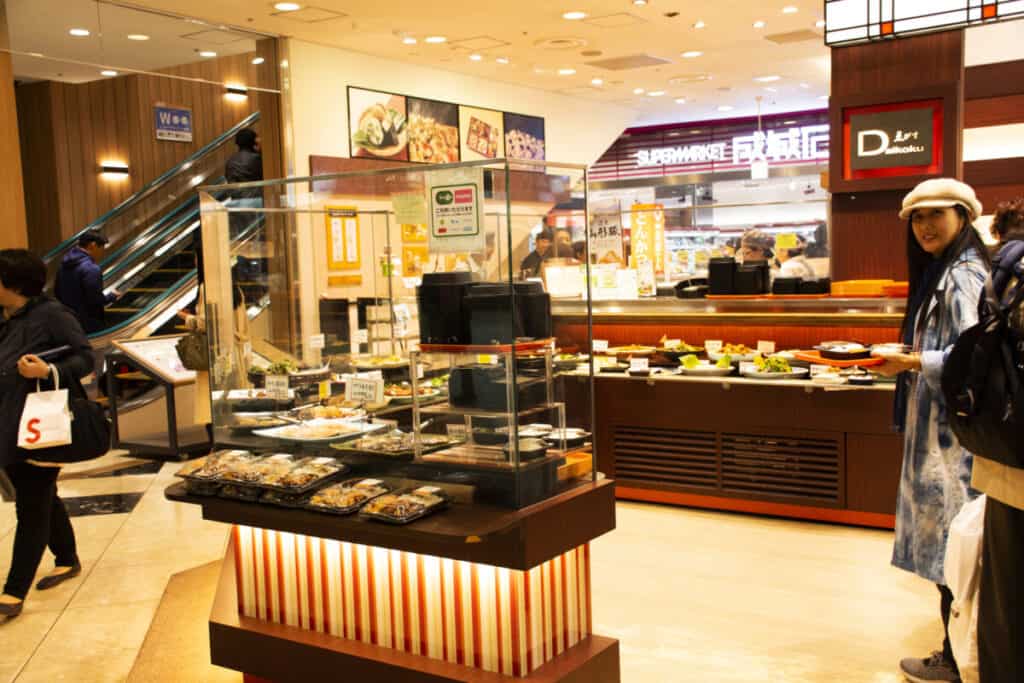
In some cases, there will be a bar that you can choose from to fill up your own container. With these, you will pay per piece and so you can customize your own food to have exactly what you want.
How to
When first entering a Japanese supermarket you will be met by a row of small trolleys (smaller than American size grocery carts) that you can use to carry your items around the store.
In most stores, these are free to use and can simply be grabbed upon arrival. However, some stores now require you to use a 100 yen coin to release the cart, but this will be returned to you when you have finished. This eliminates the need for staff to re-organize and return the carts to the cart area.
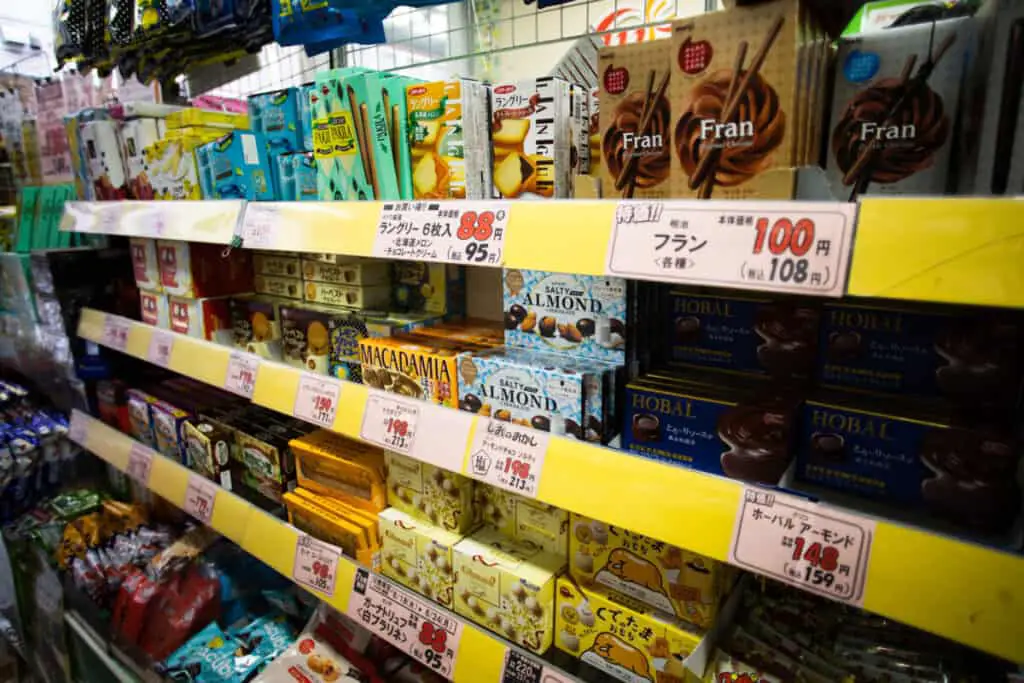
Once you have chosen all of your items you will need to take them to the register and pay. The cashier will scan each item and move it from one end of the desk to the other.
Note that although most supermarkets will accept payment by either card or cash, some smaller grocery stores will not accept cards. So, if you are unsure it is best to check before getting to the checkout.
Unlike in America, there are often no employees to bag your shopping for you. You will need to make sure that you pack away your own groceries once you have checked out and paid. You will also need to return the shopping cart to its original location.
Souvenirs
Japanese supermarkets make a great place to pick up some interesting souvenirs to take home for friends and family. There are different brands and even different products of familiar brands available that you cannot buy outside of Japan.
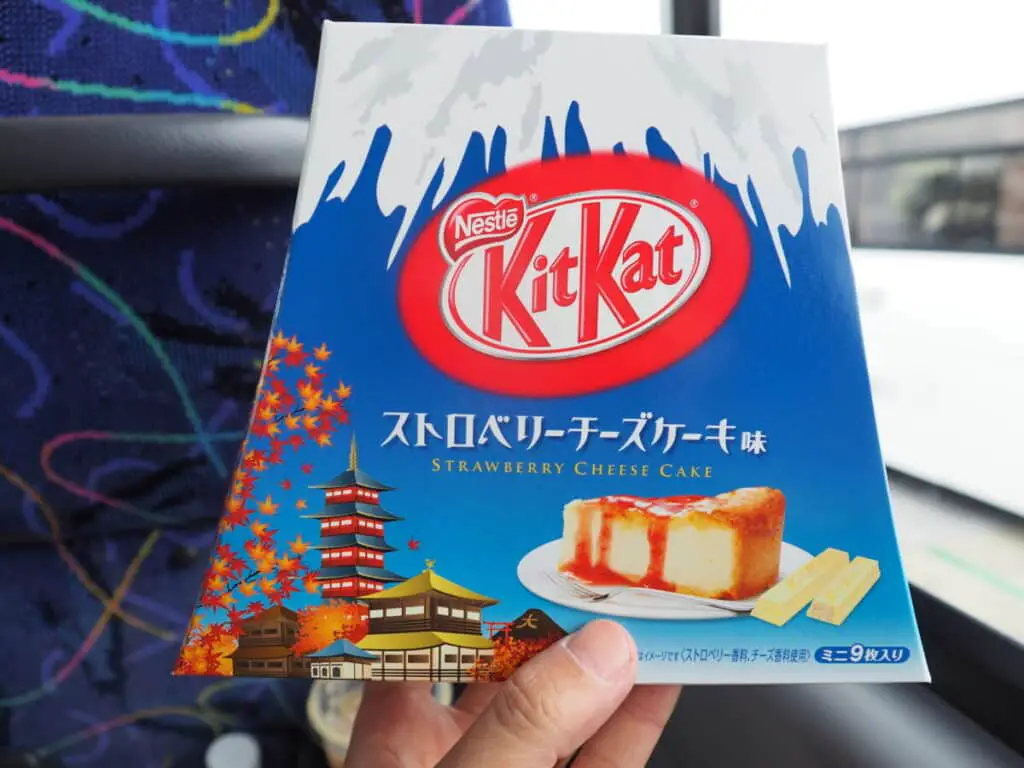
Because supermarkets typically stock larger multipacks of an item they will be less expensive than in convenience stores. Such examples are Pocky and Kitkat.
Most supermarkets will also sell traditional Japanese sweets and normally cost approximately 100 yen per piece. Alternatively, you can buy prepackaged sweets and snacks to take home.
Opening times
In Japan, there is no set time that a grocery store must be open and opening times can vary from store to store. So, if you are in need of something it is best to check your local grocery store’s opening times before heading out, especially at night.
Once rare in Japan the self-checkout at some major grocery chains is starting to become more popular in recent years.
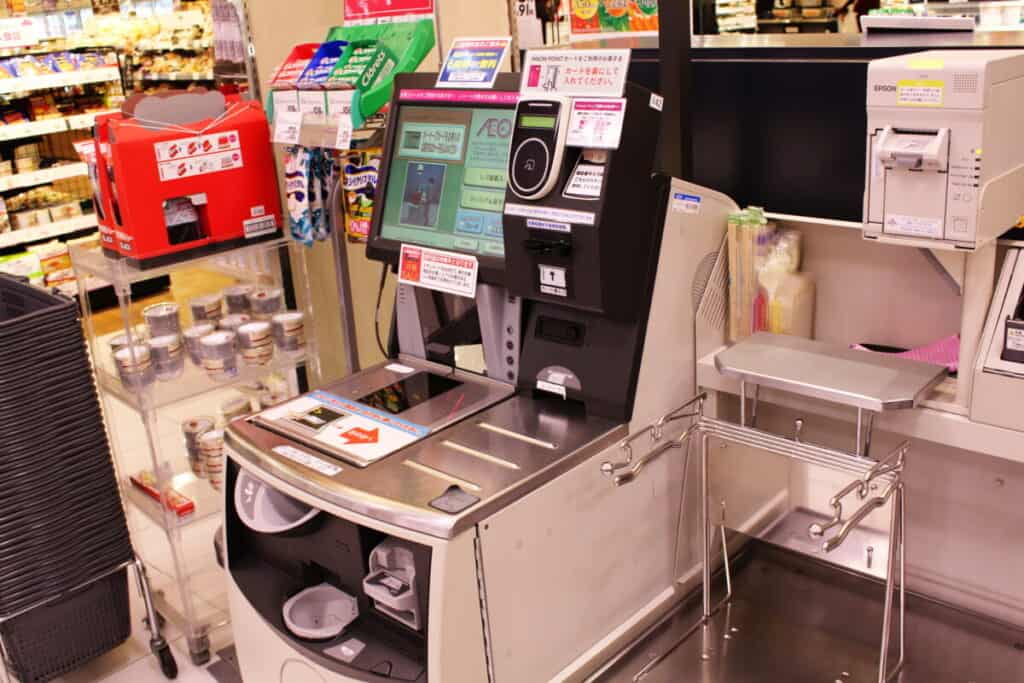
However, most supermarkets are open from 10 am to 9 pm. You can also find some supermarkets that are open 24 hours a day, or at the very least some that are open later than others, typically until around 11 pm. In an emergency 24-hour convenience stores often stock many similar items that grocers do but at a higher cost.
Conclusion
Although it may seem like a simple task, exploring a grocery store in a new country can give you a completely new appreciation for the life and culture there. You can explore the different selections of foods, understand how things operate and even observe customs and manners between the strangers around you.
Going to a grocery store in Japan is not all that different from going to one in the West. But, if you do not speak Japanese then it is best to make sure that you know how it works ahead of time.
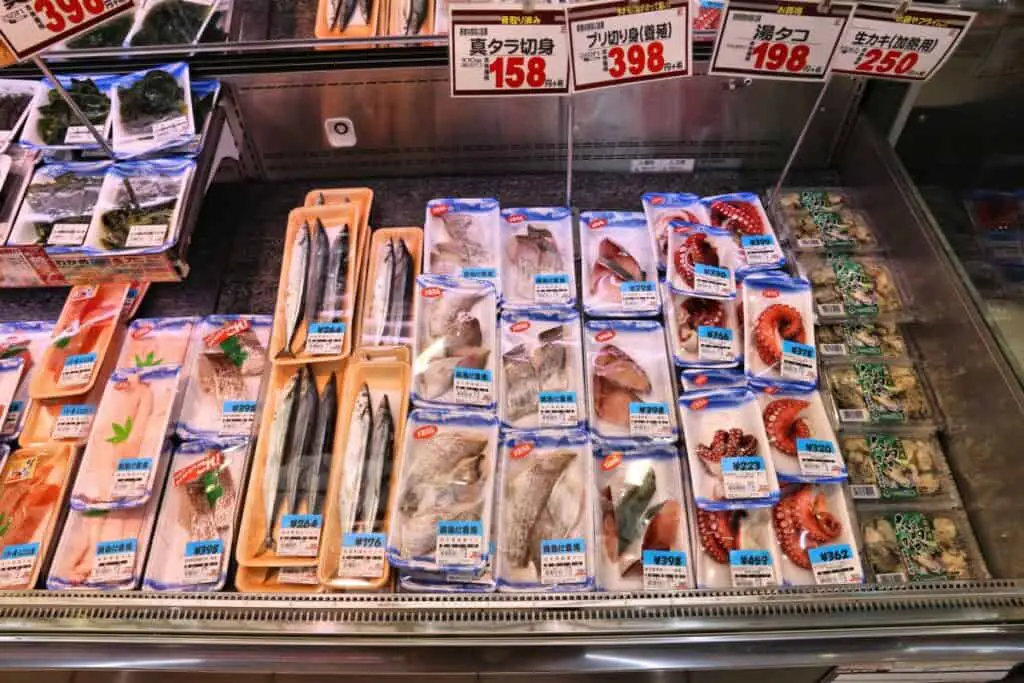
Remember to keep a 100 yen coin in your pocket in case you need it to use the supermarket’s shopping cart, remember to bag your own groceries in establishments where cashiers are very busy, and to look for the discounted section if you are on a tight budget.
Online Japanese Grocery Store YUMMY BAZAAR
When you are in a Japanese grocery store try to branch out and try some of the local food that is on offer to better get an appreciation of the culture.
A virtual trip through a Japanese grocery store

